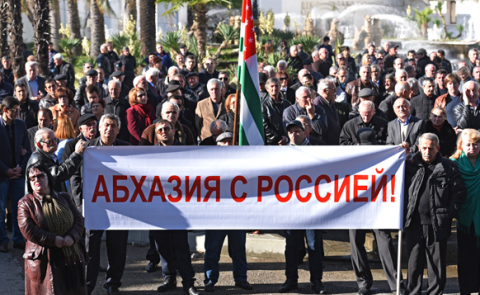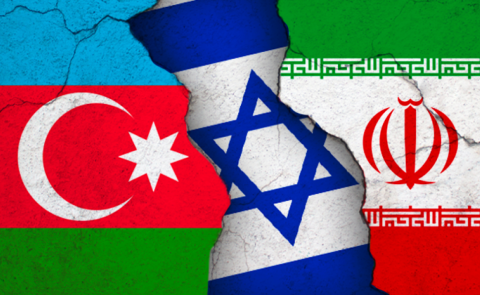
Unveiling Geopolitical Dynamics Around ‘Zangezur Corridor’
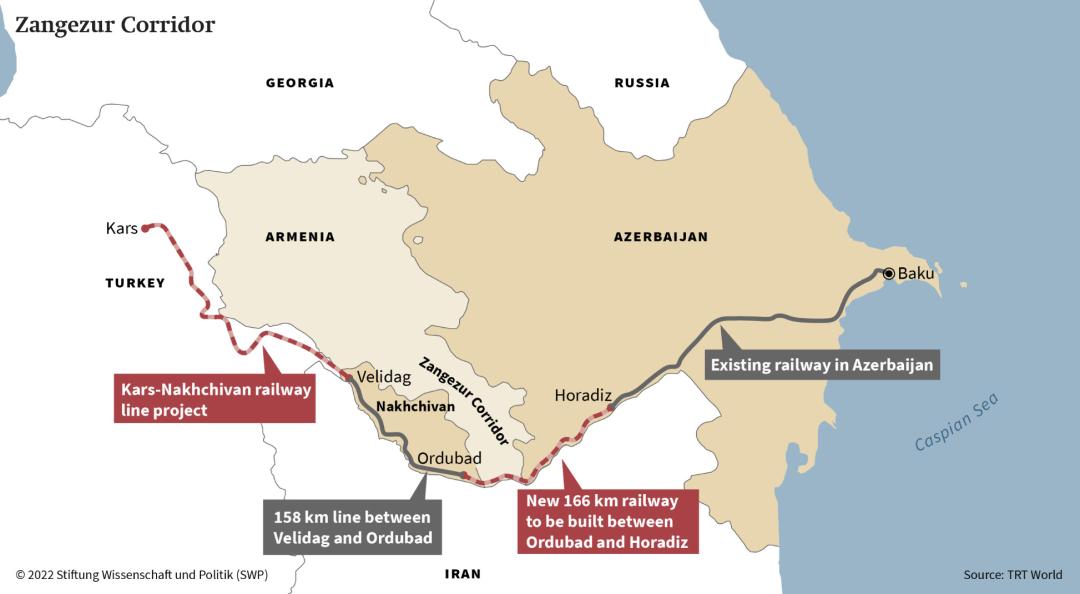
The article explores the narratives surrounding the ‘Zangezur corridor’ in the South Caucasus, considering the perspectives and interests of various regional stakeholders. The corridor aims to connect Azerbaijan and the Nakhichevan Autonomous Republic through Armenia's Syunik region. This route (not with a corridor status), which held substantial importance in regional and international transportation networks during the Soviet era, was disrupted for three decades due to the Armenian-Azerbaijani conflict over Nagorno-Karabakh.
Background
The South Caucasus witnessed major geopolitical changes following the 44-day war in the fall of 2020, culminating in Azerbaijan’s victory over Armenia. While the geopolitical dimensions of the Nagorno-Karabakh conflict are extensive, it’s clear that the consequences in terms of the global balance of power have become even broader in the aftermath of the war.
The war was halted with the signing of the tripartite statement on November 9, involving Armenia, Russia, and Azerbaijan. This statement ushered in a ceasefire, with its third point outlining the deployment of Russian peacekeeping forces along the contact line and the Lachin Corridor in Nagorno-Karabakh. The agreement specified that Russian peacekeeping troops would stay in the region for five years, with automatic extensions for successive five-year terms, unless one of the parties declared its intention to terminate this provision at least six months before the term’s end.
The establishment of the “Zangezur Corridor” is a provision stemming from the November 9 Nagorno-Karabakh ceasefire statement. It explicitly stipulates that “all economic and transport links in the region shall be unblocked. The Republic of Armenia shall guarantee the safety of transport communication between the western regions of the Republic of Azerbaijan and the Nakhichevan Autonomous Republic to organize the unimpeded movement of citizens, vehicles, and cargo in both directions. Control over transport communication shall be exercised by the Border Guard Service bodies of the FSS of Russia.”
Despite some ambiguity and varying interpretations of this article, Azerbaijan and Turkey commonly refer to it as the “Zangezur Corridor.” This corridor traverses the Zangezur region, specifically the town of Meghri, the narrowest section of the Armenian border. It would accommodate both railway and road connections, creating a direct link between mainland Azerbaijan and Nakhichevan, an Azerbaijani exclave separated from the rest of Azerbaijan by Armenia. Azerbaijan aims to establish this corridor without Armenia's jurisdiction, with Russia providing border security guarantees and control.
As stated in point 6 of the tripartite declaration, “Azerbaijan ensures the safety of the movement of citizens, vehicles, and cargo in both directions through the Lachin Corridor.” Essentially, this allowed the Armenians of Nagorno-Karabakh to establish a land connection with Armenia under Russian peacekeepers' control.
However, the post-war tensions, exacerbated by Azerbaijan’s ten-month blockade of the Lachin Corridor, the sole road connecting the Armenian-populated region, demonstrated a lack of genuine commitment to the tripartite ceasefire declaration. Likewise, the offensive against the people of Karabakh on September 19, masquerading as a “anti-terrorist operation,” resulted in significant loss of life and a mass exodus of Karabakh Armenians.
These events signal the ‘cancellation’ of the ceasefire agreement and mark the onset of an era characterized by an uncertain and fragile path to resolving the conflict, with the issue of the Zangezur Corridor now prominently featured on the Azerbaijani-Turkish agenda.
Regional Perspectives on the Zangezur Corridor
Regional actors hold diverging perspectives on the establishment of the Zangezur transport corridor. The implementation of the “Zangezur Corridor” project is integral to Azerbaijan’s ambition to become an Eurasian transportation hub, with the potential to significantly contribute to regional economic growth. The corridor will complement the Caspian transport network, which includes the “East-West” transport corridor and the North-South International Transport Corridor, along with the oil and gas pipeline system extending from the Caspian region to Europe.
Turkey also strongly supports the project. In less than a week after Azerbaijani forces swept into Nagorno-Karabakh to retake control of the breakaway region under the guise of a “counterterrorism” operation, Turkish President Recep Tayyip Erdogan visited Azerbaijan’s autonomous Nakhichevan exclave, a strip of territory that Ankara and Baku aim to link up with the rest of Azerbaijan by carving out a land corridor running through southern Armenia. Erdogan emphasized Turkey's determination to establish the corridor and stressed the strategic importance of this corridor for both Turkey and Azerbaijan.
“The establishment of this corridor is very important for Turkey and Azerbaijan. This is a strategic issue and must be completed,” he made these remarks on his way back from Nakhichevan.
“If Armenia does not pave the way for [the corridor], where will it pass through? It will pass through Iran. Iran currently considers this positive. So, it would be possible to pass from Iran to Azerbaijan.”
Turkey’s stance on the Zangezur corridor and its position as a key player in trade routes are indeed multifaceted. The opening of the corridor is of paramount importance for Turkey, as it represents the pinnacle of the creation of the Organization of Turkic States and the establishment of unbroken land connections within the Turkic world. The corridor is poised to have a significant economic impact on the connection between the Turkic republics and Turkey by creating the Caspian-Trans-Caspian International Middle East-West Corridor and reviving the modern Silk Road. The inclusion of the Zangezur route in the development of the Trans-Caspian transport route, also known as the Middle Corridor, will significantly reduce the transit time for goods traveling from China and Central Asia to Europe. There is an alternative perspective on Turkey’s corridor policy, suggesting that Ankara’s pushback against alternative trade routes reflects its determination to maintain a central role in global trade networks. Erdogan's statement during the G20 summit in India that “there can be no corridor without Turkey” underscores its strategic geographical significance and its aspirations to be a key player in facilitating international trade. The proposed India-Middle East route, backed by Western powers “to repel China’s growing influence”, is seen as a potential competitor to Turkey's ambitions as a trade hub. In this context, the Zangezur corridor could indeed be considered another alternative route that aligns with Turkey’s broader corridor policy.
Turkey and Azerbaijan announced the plan to build a gas pipeline from Igdir, and interestingly, it appears that this pipeline is designed not to transport gas from Turkey to Nakhichevan but rather the other way around. Azerbaijan’s gas reserves are limited, and it requires additional gas sources, possibly from Central Asian countries. However, there’s another significant aspect to consider here: Russian gas. The central challenge in the Russian-Turkish “Zangezur corridor” may not be primarily about the physical road but rather the supply of Russian gas.
Russia and Azerbaijan appear to have reached a compromise regarding the corridor, allowing Russian forces to maintain control over it. This arrangement positions Russia as the primary beneficiary of unblocking communication routes and establishing the corridor in the region, contrary to previous Armenian political discourse suggesting that Russia opposed the corridor due to concerns about Turkish expansion.
The plan of Russia’s Putin and Turkey’s Erdogan to construct a significant “gas hub” in Turkey cannot solely rely on the “Turkish Stream” gas pipeline that runs beneath the Black Sea. The Russians have recently been somewhat marginalized in the Black Sea region. Ideally, they would like to construct a pipeline directly from Russia to Turkey via Azerbaijan and Syunik. This would allow Russia to secure a consistent supply of Central Asian gas, exert pressure on China and Iran, and potentially hinder the export of Iranian gas. This is why the Russians aim to secure their presence in Syunik, ensuring they have guaranteed control over such a strategic energy route.
In contrast to the mentioned regional actors, Iran firmly opposes the Zangezur Corridor. In recent years, Tehran and Moscow have had differing views regarding the Corridor and its potential implications for Iran’s border with Armenia. Iran has consistently emphasized, at the highest diplomatic levels, the inviolability and permanence of its borders with neighboring Armenia.
“Iran is in favor of the development of transport communications, which will be beneficial for all countries in the region, but is against changing international and geopolitical borders,” an Iranian Foreign Ministry spokesman said in a recent briefing with journalists.Iran’s concerns and risks are also related to the potential loss of an alternative route to Europe through Armenia and the loss of its transit importance for Turkey and Azerbaijan.
The Strategic Council of Foreign Relations in Tehran, led by Iran’s former Minister of Foreign Affairs, Kamal Kharazi, also expressed concerns about the construction of the Zangezur Corridor. In an article titled “Conspiracy to Create NATO's Turan Corridor,” the council associates the project with NATO's “Turan Corridor,” which is supposedly supported by Israel and NATO. It is also alleged that Turkey and Azerbaijan aim to stir up ethnic tensions in Iranian regions with Turkish populations by building this corridor.
Nevertheless, the principle of the inviolability of borders is not the exclusive narrative prevalent in Iran. Another narrative pertains to its neighbors’ foreign policy shifts, a covert reference to Armenia’s Westernization efforts. This implies that Iran’s opposing position might adapt according to shifting geopolitical circumstances, allowing for changes in policy priorities when necessary. Some Iranian experts even argue that if an agreement can be reached on matters of sovereignty and a guarantee can be provided that the Zangezur corridor won’t disrupt the Armenia-Iran border, it might ease Iran's opposition.
Implications for Armenia and Further Repercussions
Regional infrastructure projects have largely bypassed Armenia, primarily due to its stance related to the Karabakh conflict and its stark isolation by Turkey and Azerbaijan. Reopening these communication channels is seen as a way to significantly improve connectivity and yield substantial benefits. Since 2020, Armenia has not opposed lifting blockades on international projects in the South Caucasus. However, it maintains that the “Zangezur Corridor” is a non-negotiable boundary and a red line if a special legal regime for the corridor is considered.
Armenia’s opposition to the corridor stems from two key factors. There is a growing concern that the corridor could fuel a resurgence of “Pan-Turkism,” potentially leading to both cultural and identity challenges. There is a historical basis for these concerns. Azerbaijan’s creation of the “Eastern Zangezur” economic region and assertions regarding the “Western Zangezur” as ancestral land underscore Baku’s intentions regarding the issue. Azerbaijan’s small-scale military actions near the Iranian border in September 2022 further highlight the situation’s potential significance.
Withal, with earlier demands for extraterritorial status for the corridor raised concerns about Armenia’s sovereignty. This is a valid concern, particularly in the context of Russia’s diminished influence in the region after the recent relinquishment of Karabakh. Russia is apparently redirecting its focus towards Syunik, possibly to further reinforce Armenia’s dependence on it.
Russia’s somewhat hands-off stance can be attributed to two primary factors: President Putin’s apparent resentment of Armenia’s recent ‘westernization’ efforts and Russia’s current dependence on Azerbaijan, with claims that Russia exports its oil to Europe under the guise of Azerbaijani oil.
It becomes evident that the ‘Zangezur corridor’ project carries immense economic and geopolitical magnitude for specific stakeholders, which suggests that there might be a full commitment of resources for its realization. The extent of this commitment is largely influenced by the distribution of power in the region. Various compromise scenarios are in play.
One potential scenario entails Russia retaining control over these routes in the Syunik region, with Armenia's ultimate agreement. Yet, this outcome seems less probable, at least for now.
Another scenario suggests that if it doesn't agree to the corridor voluntarily, there is a potential for military aggression by Azerbaijan. Azerbaijani President Aliyev has always been explicit in suggesting that military force could be an option if Armenia doesn’t willingly cooperate in this aspect. In such a scenario, Russia might potentially intervene with its traditional “savior” role, retaining control over the communication channels. However, a recent development complicates this scenario. In an interview with the Russian branch of the BBC on October 16, Azerbaijan's Presidential Representative for Special Affairs acknowledged Zangezur as Armenia’s sovereign territory. In the same breath, he pointed out that Baku needs to contemplate whether the opposing side can ensure the corridor’s traffic security. This introduces a new element, where the communication routes might be established under Armenian sovereignty, potentially excluding Russia from the process, through the behind-the-scenes role played by the United States.
On the other hand, Baku’s strong emphasis on the necessity of ensuring safety is a veiled reference to Armenia’s capacity to provide such security, especially given the strategic importance of the corridor and Armenia's constrained resources. In such a scenario, it’s apparent that Russia or another collaborating party might step in to guarantee the security of the routes, again entailing a certain level of compromise on Armenia's sovereignty.
So, the Armenian government’s calculations, assuming that relinquishing claims to Nagorno-Karabakh would be the silver bullet for the corridor issue, appear to have been inaccurate. This has brought the corridor issue to the forefront of the agenda. Given the project’s vast global implications and its role in reshaping regional geopolitics, it's becoming increasingly unlikely that Armenia can resist it entirely. Global aspirations for dragging Iran into a large-scale conflict weren’t a successful strategy either, at least for now. However, the recent destabilization in the wider Middle East keeps the threat of military escalation in the South Caucasus in constant shadow.
Meanwhile, some players in the region do not view other proposed solutions, such as the recently promoted 3+3 format or the construction of an Iran-Nakhichevan Road bridge, as viable alternatives to the corridor project. If Iran's stance changes due to shifting geopolitical circumstances, Armenia might find itself heavily striving to limit its losses and safeguard its sovereignty with minimal damage. The broader consequences for Armenia hinge on the power dynamics within the Russia-Turkey-Azerbaijan geo-strategic axis.
Anzhela Amirjanyan, independent researcher.
See Also

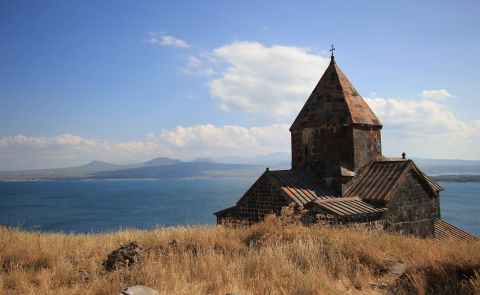
From Neorealism to Neoliberalism: Armenia’s Strategic Pivot in Foreign Policy After the Nagorno-Karabakh Conflict

Georgia and Russia: New Turn in Bilateral Relations
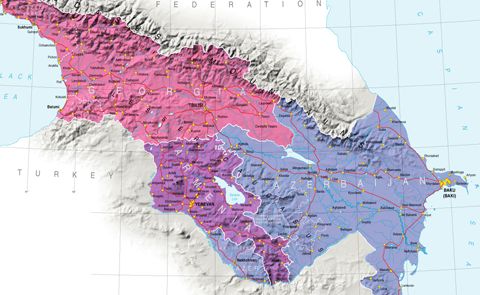
3+3 Initiative as a New Order in the South Caucasus

Economic Cooperation Between Armenia and Georgia: Potential and Challenges Ahead
